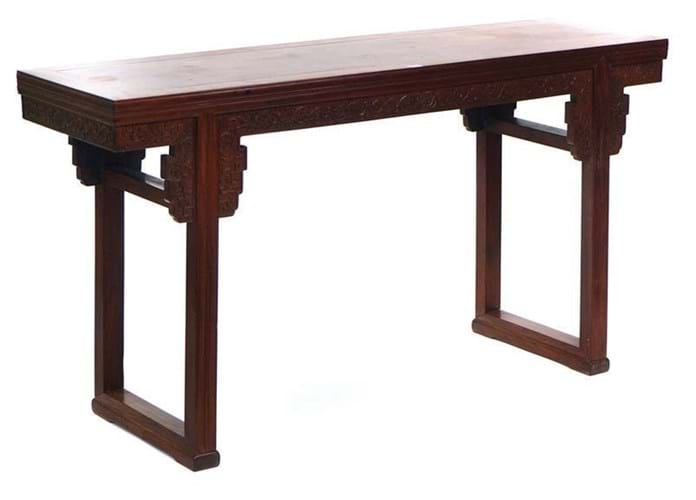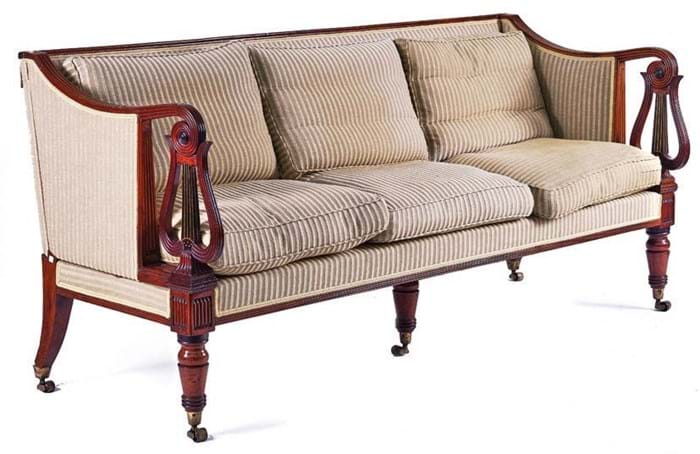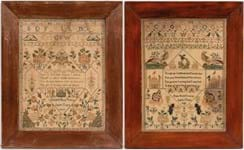Ten bidders in the room in Billingshurst, West Sussex, competed with six others on the phone, with the buyer from mainland China paying £220,000 (£278,080 including buyer’s premium) in the end.
The table had been part of the local vendor’s family collection for many years with relatively little value attached to it.
Although commonly called altar tables or pingtou’an, woodblock illustrations suggest pieces like this with recessed trestle-legs were used in various contexts and in different ways including in the scholar’s studio for scroll painting or as a ‘sideboard’ in a banqueting hall.
As many forms remained popular from the Song period onwards, Chinese furniture is notoriously difficult to date and it is often only on small points of decoration and construction that attributions are made.
The relief-carved apron to this piece, which combined archaistic patterns with scrolls of foliage of the type one might find on European 18th century furniture, hinted at the mid to later Qing period.
A similar table in jichimu (chicken wing wood) included in the second part of the Robert Hatfield Ellsworth series of sales at Christie’s New York was dated to the 18th century. Bellmans’ table, measuring 5ft (1.53m) wide, was thought to be made from the revered Chinese rosewood huanghuali.
Campaign furniture
On the altogether different ‘English furniture’ price level, but a rarity nonetheless, was a campaign or metamorphic sofa sold for £2400 (estimate £1500-2500).
Campaign furniture was on the whole of simple, practical design. However, some more elaborate and formal furniture was produced for high-status clients.
This sofa was recorded in a 19th century inventory of the Kepples Head Hotel, Portsmouth, sited only 100 yards from the main naval base and regularly used by officers and diplomats prior to embarkation.
Made in c.1810 with a mahogany show-wood frame on brass castors and ebony veneered lyre-end supports and inlaid in brass, the whole separates into transportable sections.
The back is removed by releasing a square screw concealed beneath the fabric, with the arms released by a screws located to the underside.
The design is associated with the London firm of Morgan & Sanders (1801-20), which alongside Thomas Butler and William Pocock were the leading proponents of ‘patent’ furniture in the Regency era.
Similar lyre-back chairs feature in an advert by Morgan & Sanders in the monthly periodical The Repository of Arts on August 1, 1809, which showed their premises at ‘Trafalgar House’ on the upper floor on the Strand.
The firm supplied some furniture to Nelson’s house, Merton Place in Surrey, and collapsible pieces to furnish HMS Victory.
















